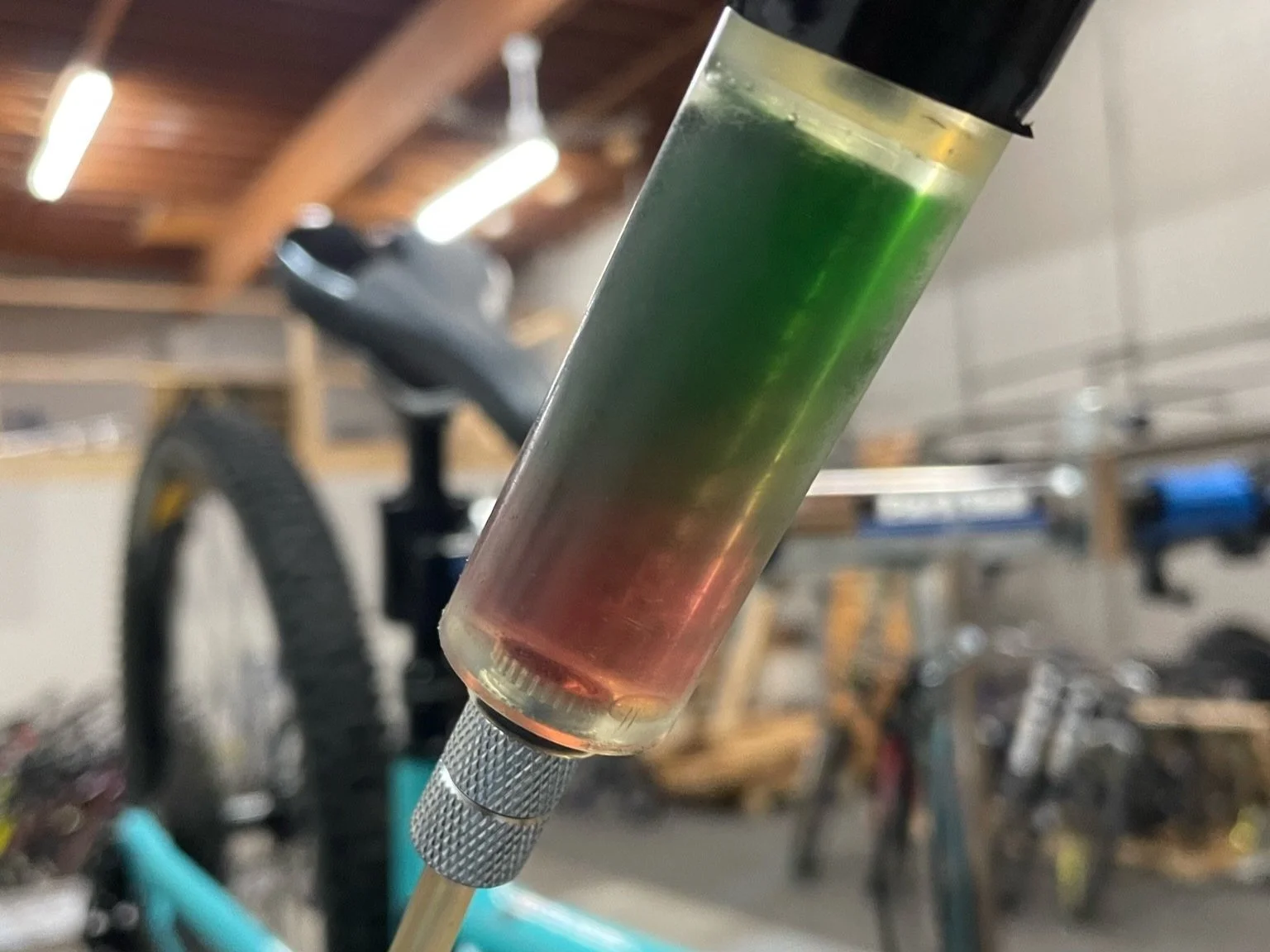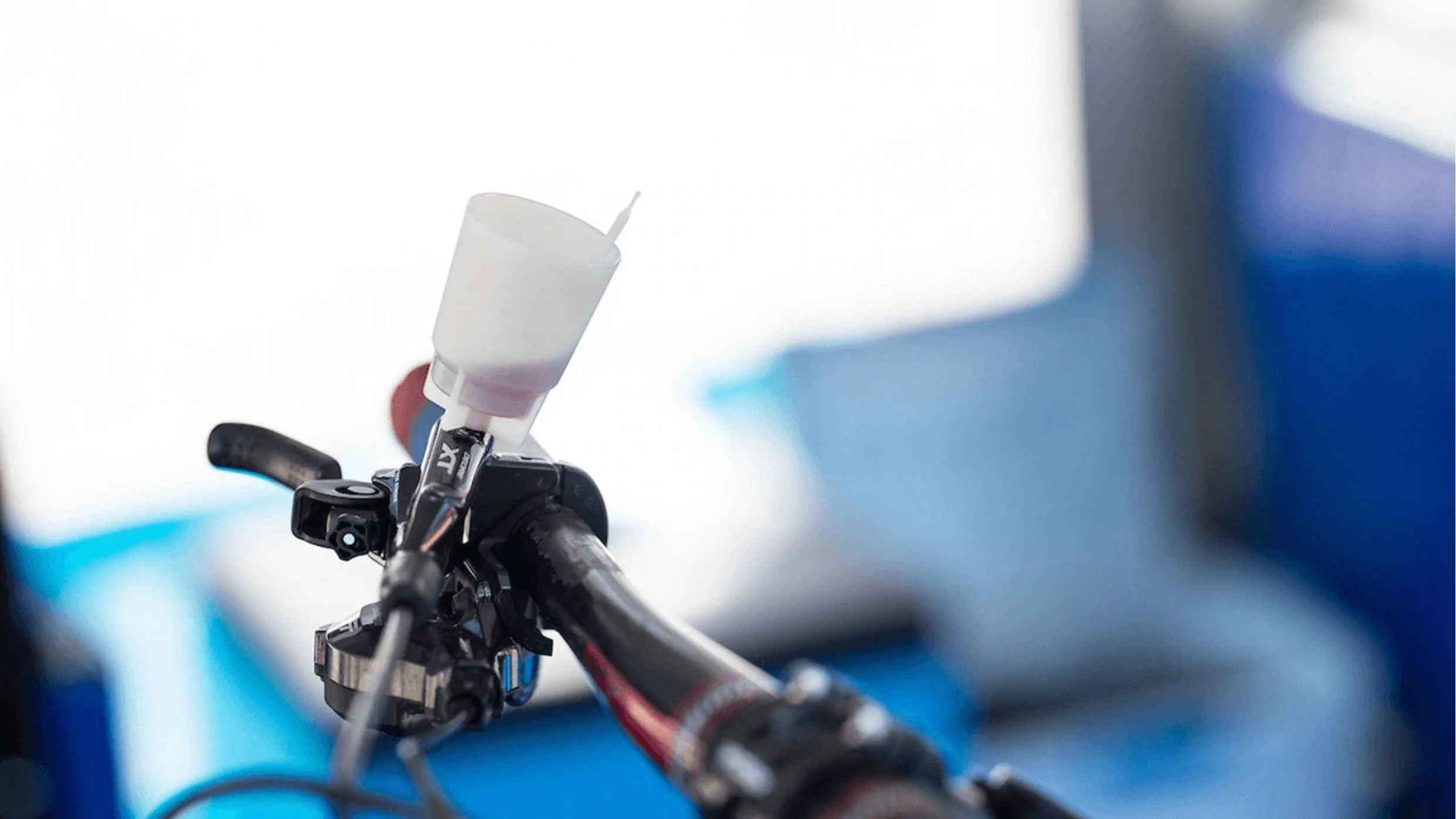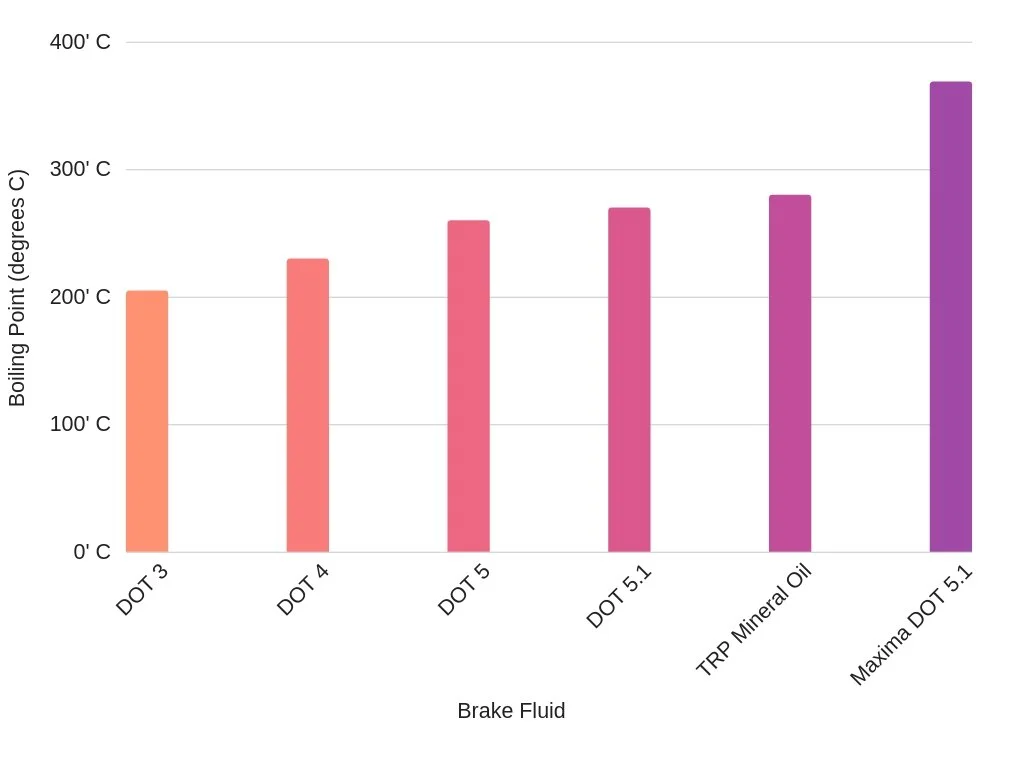DOT fluid vs Mineral Oil - Which is Better?
which brakes are better? DOT or Mineral oil based systems? TBH we think there are tradeoffs and benefits to each.
Note - for those new to this topic it’s important to understand you cannot change the type of brake fluid used in your system, this is a decision made at point of purchase and this information is meant to help inform your purchases or help you maintain what you’ve already got. DOT fluid goes in DOT fluid compatible brakes, Mineral oil in Mineral oil brakes, and you can’t just change that up - sorry.
controversy, confusion, opinions — all of these surround the great and ongoing debate as to which brake fluid is “better.”
There’s no arguing hydraulic disc brakes have changed the game for mountain bikers - just look at the speed, control and steepness riders are able to enjoy, knowing their brakes will hold up over long descents and on the gnarliest of rock faces.
Bicycle brakes, like automobile brakes, were all mechanically actuated at one time. automobiles got upgraded to hydraulic disc modles after the first hydraulic brake was patented in 1918 (previous models had been invented, but had not caught on).
the first hydraulic disc brakes for bikes came along in the 1970’s courtesy of shimano. at the time the company employed DOT fluid in their system. They were heavy! Apparently adding SOMEWHERE around eight pounds to a bike.
these systems didn’t really catch on at the time, because they just weren’t needed to stop the kind of bikes that were being ridden mostly on roads.
These days, all Shimano systems use mineral oil exclusively.
One great thing about Shimano brakes is the relative ease with which they can be bled. Photo courtesy of Shimano.com
in 1987, formula created its first hydraulic disc brake for mountain bikes. the brake lines were made out of hydraulic lines intended for the controls of heavy duty crane operations. According to Pinkbike, the italian company had its discs manufactured by a local knife producer.
today, the two biggest MANUFACTURERS of mtb brakes are sram and shimano, and the most notable difference in design is that the the former uses mainly DOT fluid, the latter mineral oil. there are a number of other internal design elements that also impact performance and rider experience, so please give us a call with questions you might have about which brands/models suit your needs the best.
For its part, Shimano says it uses mineral oil because it’s less harmful to your bike, the paint, and environment, as well as the health of mechanics who are constantly exposed to brake fliud.
Shimano’s website says “Mineral oil won't harm painted finishes, and is less damaging to your skin and the environment. Chemically speaking, DOT fluid absorbs humidity from the air, and this absorbed moisture lowers DOT fluid's boiling point over time. Shimano mineral oil starts at a higher dry boiling point than any DOT fluid specification. The boiling point of mineral oils won't change over time because they don't absorb moisture.”
i will never forget the HEARTBREAK of seeing a customer’s carbon bike come in with a blown DOT fluid hose (routed internally) that had been left sitting, allowing the DOT fluid to eat away at the paint, resin, and carbon - completely destroying the rear triangle of the bike, so yes, there’s major merit to this point.
Conversely, nearly all SRAM brakes use dot fluid. benefits include that it is generally cheaper and more widely available than mineral oil but read on for more COMPARISONS, because this is not the whole story.
SRAM recently launched its first mineral oil mountain bike brake, the DB8. Here, the company explains they were designing with less servicing/bleeding in mind, but will be sticking to DOT in other models such as the CODE and Guides, saying “Because of the temperature ranges and composition of DOT fluid, the seals we can use are lower friction and higher performance than what we could use for a mineral oil brake.”
Live To Play Sports created this handy chart to illustrate dry boiling points of various brake fluids
One major factor between the fluids is the boiling point - there’s a lot of friction, and therefore a lot of heat involved in the braking process and so the less likely your fluid is to burn, the better.
DOT fluid stands for "Department of Transportation" fluid, and it is a type of hydraulic fluid that is specifically designed for use in automotive brake systems. it’s minimum boiling point is set by regulations.
There are a number of DOT fluids on the market, DENOTED as Dot 3, Dot 4, DOT 5 (for automobiles only), and DOT 5.1, each with their own boiling point.
DOT 5.1 fluid’s boiling point is 270 degrees celsius when there’s no water in the system and 190 degrees celsius when some water has been absorbed.
DOT fluid is a glycol-based fluid that is highly hygroscopic, meaning that it absorbs moisture from the air over time, which leads to decreased braking performance because as water is absorbed, the boiling point actually decreases.
Because of this it’s important to close up your DOT fluid bottles as soon as you’ve gotten what you need out of them to prevent rather rapid absorption of water from the air.
Mineral oil, on the other hand, is non-hygroscopic, meaning that it does not absorb moisture. INEVITABLY, water will get into your system - it’s just where this H2O ends up that makes the difference.
because dot fluid absorbs moisture (hygroscopic) - it keeps the water suspended throughout the system. Whereas, in a Mineral oil system, water is heavier than the oil and is forced to pool at the lowest point of the system (usually the caliper) where it boils much sooner and causes undeniable loss of performance.
But How is all this water getting in your apparently sealed and air tight system? Well it’s neither sealed nor air tight to be honest. there are microscopic pores in yout brake hoses, and joints and seams at the levers and calipers. Water in the air works oits way in over time.
If you live in a humid region, such as North vancouver or Squamish, then you will need to bleed your brakes more often than someone living in Virgin, Utah, for example.
What all this means, is even if you don’t ride very often, you should bleed your brakes at least once a year, whether DOT or mineral oil based.
Have you ever seen black fluid coming out of the system during a bleed? This is a strong indicator water is in the system, it’s been heating up and darkening over time and this happens to both mineral and DOT systems, though I honestly see a lot less blackness coming out of DOT systems overall.
At the end of the day one system/fluid/design is not better or worse than the other - the question is which one is right for you?
Come into Dialed Bike Service and chat with us about your riding goals - our advice is personalized and based on listening to what you need.



